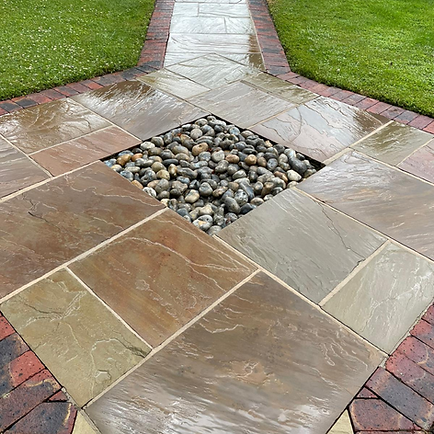Decks need maintenance.
A twice-yearly cleaning is needed at a minimum. But wood decks-even with good upkeep-can still warp, rot, or get termites.
Plus, no stain or paint job lasts forever. Fortunately, you can reset the clock by restoring your deck and refinishing it.
The work isn't expensive (especially compared to deck replacement) and requires no special skills.
Read on to learn how to restore and refinish your wood or first-generation composite deck.
How Much Does It Cost to Refinish & Restore a Deck?
Deck refinishing cost depends on its size and the extent of deterioration.
The choice of material-pressure-treated (PT) lumber, cedar, or composites-will also affect the cost.
After the worn sections are replaced, the entire deck will need refinishing.
On a DIY job, that could entail renting a pressure washer and buying a chemical stripper, sandpaper, and a cleaner-brightener.
Those materials, plus the paint or stain, can cost a DIYer $0.50 to $0.65 per sq ft.
If you don't feel you possess the skills to do the job, consider hiring a professional to restore and refinish your deck completely.
Labor costs will vary depending on your contractor.
Most composite deck boards only need occasional cleaning and should retain their appearance without much upkeep.
How to Restore a Wood Deck Wood decks require a significant amount of maintenance, and when that's neglected it shows.
To restore a weathered wood deck, inspect it for decay (rot, termites) and replace the bad boards. Next, remove the old finish.
Scraping and sanding are the traditional methods, but chemical strippers are also available.
After cleaning and rinsing the deck, apply the new stain or paint.
Step 1: Clear Off Debris & Furniture to Inspect the Deck Remove furniture, planters, rugs, grills, etc., from the deck and sweep it clean.
Note where the dirt accumulates and check the wood for moisture and decay by poking it with a screwdriver.
Any area where the tool sinks in easily indicates rot.
The closer the wood to the ground, the more likely it is to rot.
Check where the deck meets the house, too.
If you find severe decay in any part of the deck's structure, repair those areas before proceeding.
Step 2: Repair Any Damage Replace broken or warped boards. Watch for dry rot, too.
This is caused by a fungus that eats cellulose, the material that gives wood its strength and stiffness.
Before replacing decayed or damaged boards, take some photos of the deck and close-ups of the board and share them with your decking supplier.
They'll be able to identify which species of wood is currently on the deck so that any replacement boards are of the same species.
If you find that the majority of the deck boards are bad, consider replacing all of them with composite decking.
It requires much less maintenance than wood and doesn't rot.
Step 3: Remove Existing Stain or Paint To ensure the new finish will adhere to your deck, scrape and sand away the old paint or stain until you reach bare wood.
Prior to any sanding or scraping be sure to recess nail or screw heads below the surface of the wood. Replace any nails or screws that are showing signs of rust.
To minimize fatigue, use a scraper that you pull instead of push, and wear knee pads.
Scrape parallel to the grain and beware of using high-speed power tools or coarse sandpaper.
They might leave scratches that are difficult to conceal.
Pressure-washers are fine for removing weakly adhered finishes but they can also damage the wood when misused.







